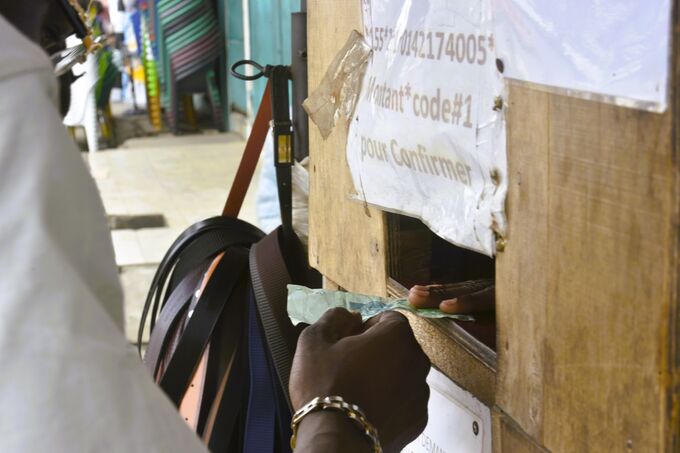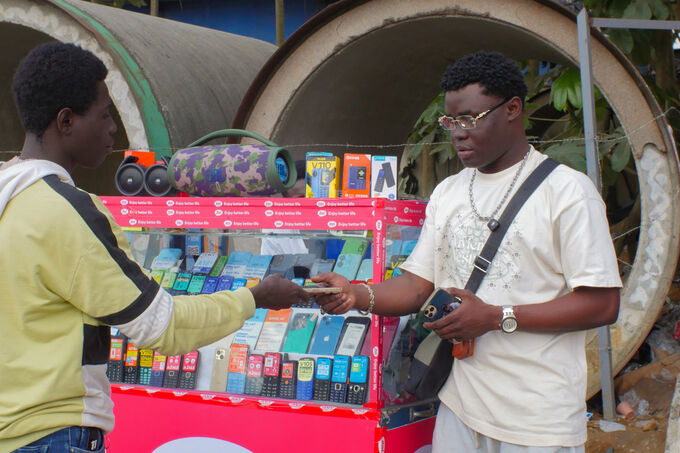
News
The Rise and Stall of CBDCs and Cryptocurrencies in Africa: What's Next?
by Zachary Kazzaz, Digital Financial Services Advisor, AfricaNenda - 29 March 2023
Coming out of last year’s SIIPS, there seemed to be demonstrative progress across Africa toward central bank digital currencies (CBDCs). eNaira was reaching tens of thousands of transactions, and the e-Cedi was on its way to a full launch. However, 2023 has created new headwinds for CBDCs and their cousins, crypto-currency. The first implementation of CBDC in Africa, eNaira, is being openly restructured, and the two leading US banks for the crypto-industry have been shuttered.
Both CBDC and crypto rely on blockchain technology to facilitate transactions. While CBDCs are backed by Central Banks and pegged to national currencies, cryptocurrencies (e.g. bitcoin, Ethereum) are free floating based on the supply and demand of sales.
The expanding gap between cryptocurrency and CBDC usage
The usage of blockchain in financial services is revolutionary, especially in Africa, where the costs of financial services continue to strain the budgets of the poor. Blockchain transactions allow for decentralized processing and instead rely on the distributed nodes of wallet holders and miners to complete and verify the transaction. This decreases the risks of a single point of failure when a processor or financial service back-end may be offline. Blockchain transactions are immediate and irrevocable, creating a permanent record and mirroring the convenience of cash.
Cryptocurrency continues to operate in a regulatory grey zone. Many crypto wallets used in Africa are housed within Caribbean providers, and there are limited regulations applicable to cryptocurrency custodianship. Individuals are not able to deposit their cryptocurrencies in domestic banks or mobile money providers as they would with traditional equity or foreign currency balances. Furthermore, the rapid volatility of cryptocurrencies, without meaningful consumer disclosures, creates undue financial risks.
CBDCs are intended to solve both issues by creating a sound regulatory structure around them and pegging them to a national currency, regardless of the inherent volatility in the underlying currencies.
Transacting with crypto requires only an internet connection, and thus individuals in Africa have been active on exchanges since the origination, with exposure to bitcoin, Ethereum, etc. There is currently rising usage of stablecoins through various exchanges. While the use of cryptocurrencies in these markets is increasing, there seems to be a diminished interest in CBDC.
The Central Bank of Nigeria has recently announced that eNaira is experiencing dual struggles of low adoption and insufficient back-end technology. Of the nearly one million wallets opened, only eight percent are active. The average transaction size is about $115 (53000 NGN), more than 50% of a middle-class monthly salary, making its current use unlikely among by low-income Nigerians. The reason for the technology switch is yet to be public, however, it may be related to the desire to increase their control over the domestic money supply as the CBN simultaneously undergoes a demonetization effort.
Although in Ghana, the pilot launched last year, little additional information has been released in the preceding five months. The structure of the Ghana program might face some challenges in reaching financial inclusion goals, given the reliance on a card-based solution and POS readers (instead of a feature phone-enabled solution), which would add cost and decrease the scalability.

The roadblocks to CBDC adoption in Africa
Of the 13 other markets in Africa exploring CBDC, none have publicly acknowledged progress or announced a commercial expansion. There is value in exploring the current circumstances and assessing several theories at present:
- Volatility in the overall crypto market is decreasing the appetite to pursue blockchain technology: The FTX collapse wiped out $8Bn in value and consumers savings. While the largest, it was joined by a list of other failed exchanges or misappropriated consumer funds. Celsius and Voyager Digital(07/2022), Thodex and Vebitcoin 04/2021. Further, FTX had a contagion effect and likely catalyzed the closure of Signature Bank and Silverlake bank in the US, among the first US bank failures in the past three years.
- Missing the consumer perspective: Customers want efficient, safe solutions with well-known technology. Is there a disconnect between the envisioned functionality and the needs of low-income consumers?
- Financial inclusion is often touted as an objective of these programs. But the way forward is not clear, nor is the value proposition for the poor beyond the existing financial services in the market. CBDC programs may need to rethink technical connections to expand access and create corresponding financial literacy programs.
- Rising global interest rates: The rising interest rates to combat inflation in the US and Europe are having a waterfall effect on the availability of financing in lower- and middle-income countries (LMICs). As central banks must dedicate more effort to hard currency reserves and monetary policy during this period, are CBDCs projects becoming de-prioritized due to limited available capacity?
- Increase global regulatory oversight: The US and the EU are developing guidance and recommendations on cryptocurrency and advocating for their responsible usage. The motivation for new regulation will be further strengthened by the recent bank failures. Are African central banks adopting a wait-and-see approach as they fill the void on cryptocurrency regulations to avoid development that would run amuck of global standards?
It may be a combination or none of the above that is driving the change in the winds. I look forward to working with industry stakeholders to unearth the drivers and impact of CBDCs and on pragmatic applications of blockchain technology to deepen financial inclusion and improve the lives of the poor.


